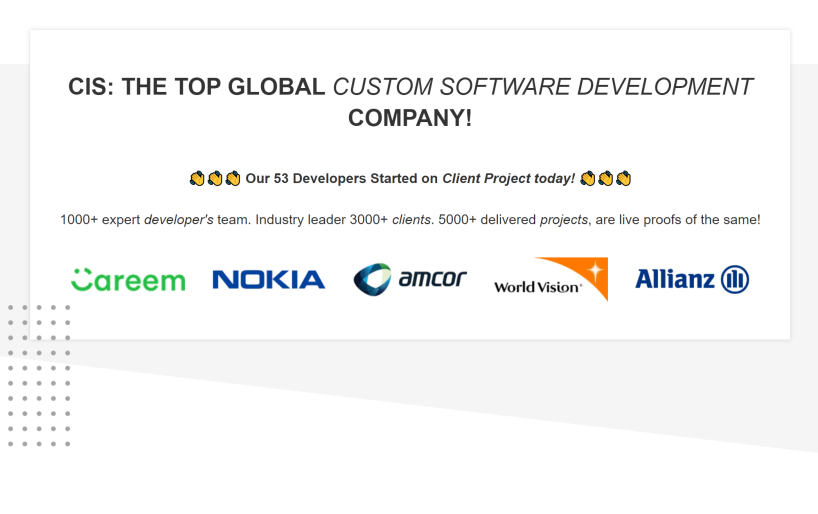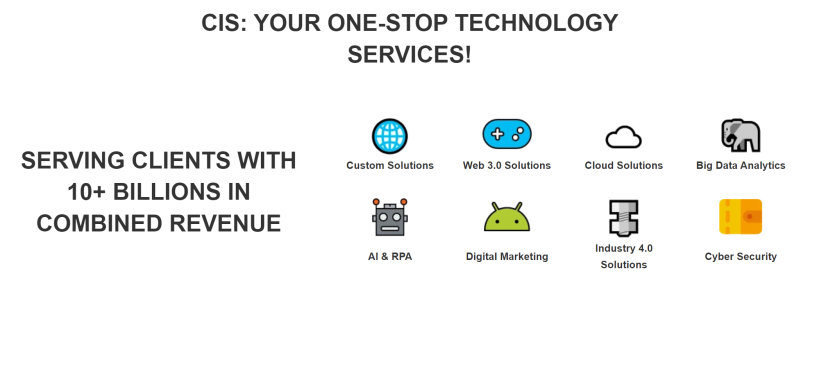Maximizing ROI: The Cost and Benefits of Adopting Adobe Experience Manager For Ecommerce for Your Business
- Adobe Experience Manager for eCommerce - Detailed Analysis by Enterprise Solutions Experts
Request A Free Consultation - Why Use Adobe Experience Manager For ECommerce



Why Mid-size Companies and Enterprises needs Adobe Experience Manager For ECommerce:
Adobe Experience Manager for eCommerce is a powerful platform that helps mid-size companies and enterprises to quickly create, manage, and deliver personalized digital experiences across all channels. It provides an integrated set of tools to drive customer engagement, increase revenue, improve operational efficiency, and reduce costs. With Adobe Experience Manager for eCommerce, businesses can easily develop engaging shopping experiences with product information management (PIM) capabilities such as dynamic content assembly and delivery; optimize customer journeys with analytics-driven personalization; leverage machine learning to automate processes; and secure their data with enterprise-grade security features. Additionally, the platform enables organizations to integrate existing systems into their commerce operations while providing easy access to third-party services like payment providers or fulfillment partners.
Benefits of using Adobe Experience Manager For ECommerce in Mid-size companies and Enterprises:
1. Increased customer engagement:
Adobe Experience Manager for eCommerce provides a comprehensive suite of tools and features to help companies create engaging experiences that drive conversions, loyalty, and customer satisfaction. From personalized product recommendations to optimized checkout flows and intelligent search capabilities, AEM helps companies deliver the right content at the right time to meet customer needs.
2. Improved scalability:
With AEM's cloud-based architecture, mid-size companies can scale up quickly as their business grows without needing additional infrastructure investments or IT resources. This makes it easier for them to keep pace with changing market demands while still maintaining high performance levels across all channels.
3. Enhanced security:
Security is always a major concern when handling sensitive data like credit card numbers or personal information online-which is why AEM offers robust security measures such as encryption protocols and secure authentication systems that protect customers from fraudsters and hackers alike.
4 .Optimized user experience:
By leveraging AI technology in its platform, AEM enables businesses to deliver an intuitive user experience no matter what device they are using-from desktop computers to mobile devices-and make sure their customers have access to the most relevant products at any given moment in time.Detailed Features of Adobe Experience Manager For ECommerce for Mid-size companies and Enterprises:
1. Scalable and Flexible Architecture:
Adobe Experience Manager for eCommerce is built on a scalable, flexible architecture that allows companies to quickly and easily scale up or down depending on their needs. It also supports multiple languages and currencies, making it easy for companies to reach customers around the world.
2. Easy Content Management:
The platform makes it easy to manage content across all channels with drag-and-drop tools, customizable templates, and intuitive workflows. This helps ensure that content is consistent across different devices and platforms while still being tailored to each customer's individual preferences.
3. Personalization Features:
Adobe Experience Manager for eCommerce provides powerful personalization features such as product recommendations based on past purchases or browsing history, targeted promotions based on customer demographic data, and automated email campaigns triggered by specific actions taken by customers in your store.
4. Comprehensive Analytics Tools:
With comprehensive analytics tools powered by Adobe Analytics Cloud (AAC), you can get detailed insights into how customers interact with your website or mobile app so you can make better decisions about how to improve your online experience over time. You'll be able to track key metrics like revenue per visitor, average order value (AOV), conversion rate (CVR) , engagement rate (ER), bounce rate (BR) , etc., enabling you to identify areas of improvement in order optimize performance even further .5. Seamless Integration with Other Platforms: Adobe Experience Manager for eCommerce integrates seamlessly with other popular marketing automation platforms such as Salesforce Commerce Cloud and Marketo Engage so you can leverage existing investments in those systems while taking advantage of the features offered by AEM for ecommerce .
Request A Quote - Why Use Adobe Experience Manager For ECommerce
Who are the Users of Adobe Experience Manager For ECommerce:
Adobe Experience Manager for eCommerce is used by many large and medium-sized companies, including Unilever, Samsung, Nestle, PepsiCo, Gap Inc., Walmart, The Home Depot, L'Oreal USA, Macy's and more.
How to ensure Data Security and Compliance with Adobe Experience Manager For ECommerce:
1. Use encryption:
Encrypt data at rest and in transit to ensure it is secure from unauthorized access. This can be done using SSL/TLS, AES-256, or other industry-standard encryption protocols.
2. Implement user authentication and authorization:
Ensure that only authorized users have access to the platform by implementing multi-factor authentication (MFA) for user logins and role-based authorization for different levels of permission within the system.
3. Monitor activity logs:
Track all activities related to your eCommerce store such as login attempts, payments, order changes etc., so you can identify any suspicious behavior or potential security threats quickly and take appropriate action before they become a problem.
4. Adhere to compliance regulations:
Make sure that your eCommerce store complies with applicable laws such as PCI DSS, HIPAA, GDPR etc., so you don't run into any legal issues down the line due to noncompliance with these regulations..How Adobe Experience Manager For ECommerce can increase organization Productivity, Agility, and Profitability:
Adobe Experience Manager for eCommerce is a powerful platform that can help organizations increase productivity, agility, and profitability. By leveraging the platform's digital asset management capabilities, businesses can quickly create and deliver personalized customer experiences across multiple channels. This helps to reduce costs associated with creating content and managing campaigns while also improving customer engagement. Additionally, Adobe Experience Manager for eCommerce provides advanced analytics tools that allow companies to gain insights into their customers' behavior in order to better target marketing efforts and optimize their online stores for maximum conversion rates. Finally, the platform offers integrated payment solutions which enable businesses to accept payments from customers more securely and efficiently than ever before - helping them increase sales volume and profits over time.
Request A Quote - Why Use Adobe Experience Manager For ECommerce
How to Measure KPIs and increase Benefits of implementing Adobe Experience Manager For ECommerce in Mid-size companies and Enterprises:
1. Track website performance metrics:
Monitor website performance metrics such as page load times, bounce rate, and time on site to measure the impact of Adobe Experience Manager for eCommerce implementation.
2. Analyze customer behavior:
Use data analytics tools to track customer behavior before and after implementing AEM for eCommerce. Look at how customers interact with the platform, what products they are buying, and any changes in their purchase patterns or behaviors over time.
3. Measure cost savings:
Calculate the cost savings associated with using AEM for eCommerce compared to other solutions available on the market today. Consider factors like setup costs, ongoing maintenance fees, hosting fees etc., when making this calculation in order to get a more accurate picture of total cost savings from implementation.
4. Increase conversion rates:
Utilize features within AEM for eCommerce that can help increase conversion rates by providing an improved user experience (UX). This could include personalizing content based on user preferences or offering product recommendations tailored specifically to each individual visitor's needs and interests.
5 .Improve marketing efforts:
Leverage data collected through AEM for eCommerce to improve marketing efforts across multiple channels including email campaigns, social media posts etc., by targeting users with relevant messages based on their past interactions with your brand/products online or offline stores..How Adobe Experience Manager For ECommerce can increase Employee Morale in your organization:
Adobe Experience Manager for eCommerce can increase organization employee morale by allowing employees to have a more efficient and enjoyable experience when using the company's online store. This could include features such as personalized product recommendations, streamlined checkout processes, faster loading times, and improved search capabilities. Additionally, having an optimized eCommerce platform can help reduce customer complaints and make it easier for employees to serve customers quickly and accurately. All of these benefits can lead to increased job satisfaction among employees who are responsible for managing the company's online store.
How Adobe Experience Manager For ECommerce is Better than its Competitors:
Adobe Experience Manager for eCommerce is better than its competitors in several ways. It offers an end-to-end commerce solution that enables customers to create personalized experiences across all channels and devices. Its intuitive tools make it easy to manage product catalogs, content, promotions, pricing, and more. Additionally, Adobe Experience Manager for eCommerce provides powerful analytics capabilities that enable companies to gain insights into customer behavior and preferences. Finally, the platform includes integrated search capabilities which allow customers to quickly find what they are looking for on your site.
Request A Quote - Why Use Adobe Experience Manager For ECommerce
Cost to Develop & Implemention of Adobe Experience Manager For ECommerce:
The cost of developing and deploying Adobe Experience Manager for eCommerce can vary widely, depending on the scope of the project. Factors such as the size of the site, number of integrations required, customization needed, and other features will all influence the total cost. Generally speaking, a budget between $50k to $250k is needed to develop and deploy an AEM eCommerce solution.
Why outsourcing implementation services for Adobe Experience Manager For ECommerce is better for Mid-size companies and Enterprises:
Outsourcing implementation services for Adobe Experience Manager for eCommerce is better for mid-size companies and enterprises because it can provide them with the expertise they need to launch their online store quickly and efficiently. An experienced team of experts can help ensure that all technical requirements are met, as well as providing guidance on how to maximize the platform's features in order to get the best results from their investment. Additionally, outsourcing implementation services can save time and money by avoiding costly mistakes made during a DIY setup process. Finally, an outsourced team will be able to provide ongoing support throughout the life cycle of your eCommerce business, helping you stay up-to-date with any new developments or changes in technology.
Request A Quote - Why Use Adobe Experience Manager For ECommerce


